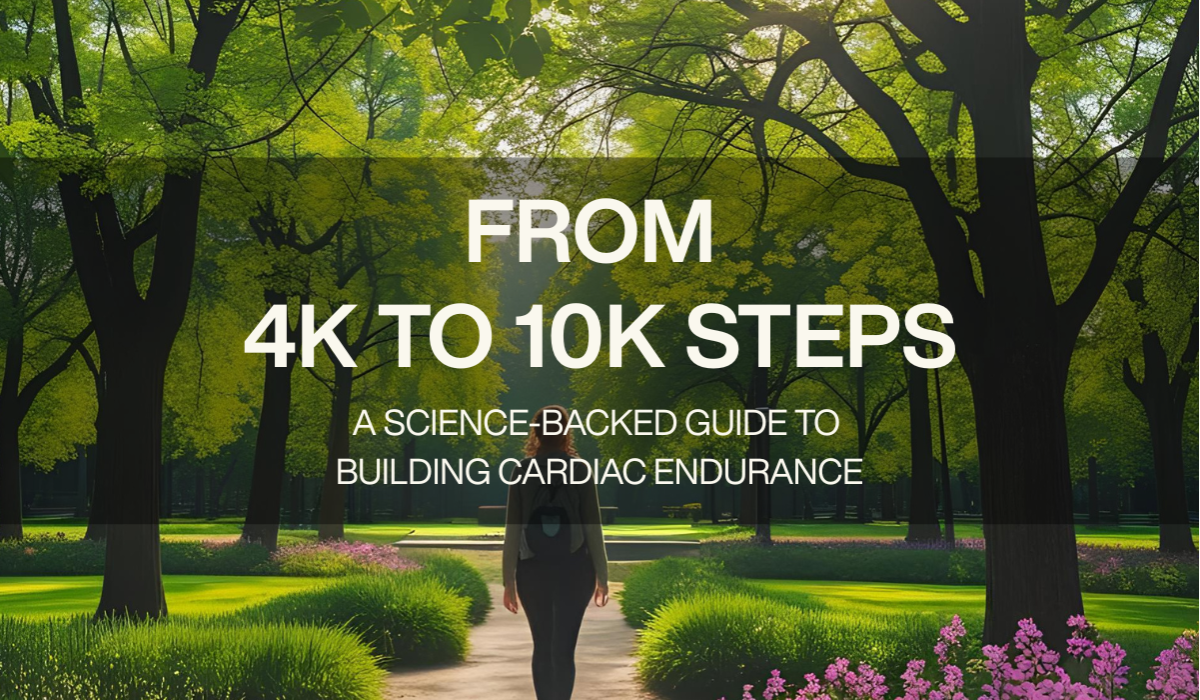We’ve all heard it:
“10,000 steps a day keeps the doctor away.”
But where did that number come from? And more importantly how do we realistically get there without overwhelm or burnout?
At Intuiwell, we believe movement isn’t just about metrics. It’s about connection. Progress, Care, So here’s a grounded, science-meets-soul guide to help you understand why step goals matter, and how to start where you are.
————————————————————————————————————————————————————
Why 10,000 Steps? Understanding the Science
The 10,000-step goal didn’t actually begin with research — it started as a marketing slogan in 1965 by a Japanese pedometer brand called “manpo-kei,” which means “10,000 steps meter.” But since then, research has found that walking more really does improve your heart health, longevity, and energy — though you don’t have to hit 10K to feel the benefits.
————————————————————————————————————————————————————
Key Findings from Research:
- A 2019 study in JAMA found that as few as 4,400 steps/day reduced the risk of death in older women — with benefits continuing up to 7,500 steps.
- The Lancet (2022) study showed that 7,000–10,000 steps/day improves heart health, lowers chronic disease risk, and boosts life expectancy.
- Walking regularly improves blood sugar, blood pressure, fat metabolism, and inflammation.
- Even light-intensity walking contributes to NEAT (non-exercise activity thermogenesis) — helping with metabolism, mental clarity, and mood.
More movement = better health, but 10,000 isn’t a rule. It’s a helpful upper-range target, not a mandate.
————————————————————————————————————————————————————
A Gentle 4-Week Guide: From 4K to 10K Steps
Week 1: Build Your 4K Base
Goal: Get consistent with light daily movement.
How to get your 4,000 steps:
- Walk for 5–10 minutes after each meal
- Pace during phone calls or screen breaks
- March or sway in place during tasks
- Dance to one song a day
Break it down:
4 walks of 1,000 steps = 4K. Totally doable.
————————————————————————————————————————————————————
Week 2: Stretch to 5,000–6,000 Steps
Goal: Add intentional bursts of movement.
Try this:
- One 15–20 min brisk walk (break it up if needed)
- Add 2K steps more = 2 walks 2,000 steps more.
- Walk in place while watching TV
- Park farther or take stairs where possible
Mindset Tip: You’re not working out. You’re gently reminding your heart that movement is still a home.
————————————————————————————————————————————————————
Week 3: Reach for 7,000–8,000 Steps
Goal: Increase duration and flow.
Try this:
- Two 10–15minute walks — morning & evening
- Try a walking video on YouTube (e.g., Walk at Home)
- Get off the bus one stop early or loop around your block
- Add 2 min walk loop if sitting more than 2 hours.
- Add 1k steps more = 1,000 steps
Use an app like StepsApp or Pacer — not to obsess, but to stay aware.
————————————————————————————————————————————————————
Week 4: Flow Into 9,000–10,000 Steps
Goal: Let movement become part of your day.
Ideas to explore:
- Evening screen-free walk for 20 minutes
- Nature walks or weekend park strolls
- Walking meditations or breath-linked steps
- “Walk and talk” with friends or family
- Add 2-3k steps by going to market or place of worship.
Reminder: You don’t need to be perfect — just present.
————————————————————————————————————————————————————
Final Thoughts: Your Heart Wants Rhythm, Not Perfection
The magic isn’t in 10,000.
It’s in moving more than you did yesterday, with kindness, breath, and intention.
Whether you start at 2K, 4K, or 8K — your steps count.
Not just for your heart, but for your mental clarity, sleep, energy, and self-trust.
————————————————————————————————————————————————————
Summary Table:
Step Count Health Impact
2,000–3,000 Sedentary — good place to begin moving
4,000–6,000 Lightly active — noticeable benefits
7,000–8,000 Moderate — strong cardiovascular gains
10,000+ Active lifestyle — endurance, energy



